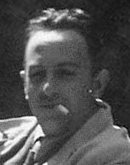

Gino Pollini
Biography
Gino Pollini was an Italian rationalist. He was interested in music and played the violin. He passed on his passion for music to his son Maurizio Pollini (1942-24), who was an internationally recognized pianist and conductor. In his studies, Pollini continued in Milan, where he enrolled in the Faculty of Engineering and then, at the suggestion of Fortunato Depero, he entered the Faculty of Architecture, graduating in 1927. In 1926, he became a member of the student Group 7, which marked the official beginning of rationalism in Italy. Among the members of the group was Luigi Figini, who became his friend and partner throughout his professional life (Figini e Pollini). In 1929, he participated with Adalberto Libera in a competition for the design of the city of Bolzano, which he won ex aequo. The project for Bolzano was a harbinger of his involvement in urbanism, which led him to represent Italy at the international CIAM congresses and to play an active role in the preparation of the Athens Charter in 1933. A decisive moment in his professional career was his meeting with Adriano Olivetti, who entrusted him with the task of designing workshops (1934), a company canteen (1940), a nursery (1941), and houses for employees (1942) for the Olivetti company in Ivrea. All of these works were characterized by a rationalist approach, marked by an exercise in stylistic syntactic rigor using a very reduced vocabulary, basic materials, and a rejection of decoration.
During the same period, he worked together with Giuseppe Terragni and Pietro Lingeri on the project for the Milanese Brera district. In 1937, he participated in the development of the regional plan for Valle d'Aosta, and in 1940, in cooperation with Luigi Piccinato, he worked on the plan for the city of Ivrea.
After World War II, he taught at the Faculty of Architecture in Milan and later in Palermo. In 1951, he designed the Milanese district of Harar in collaboration with Gio Ponti, and in 1952, he realized the church of Our Lady of the Poor. In Palermo, he collaborated with Vittorio Gregotti on university buildings for Viale delle Scienze.
Gino Pollini was an Italian rationalist. He was interested in music and played the violin. He passed on his passion for music to his son Maurizio Pollini (1942-24), who was an internationally recognized pianist and conductor. In his studies, Pollini continued in Milan, where he enrolled in the Faculty of Engineering and then, at the suggestion of Fortunato Depero, he entered the Faculty of Architecture, graduating in 1927. In 1926, he became a member of the student Group 7, which marked the official beginning of rationalism in Italy. Among the members of the group was Luigi Figini, who became his friend and partner throughout his professional life (Figini e Pollini). In 1929, he participated with Adalberto Libera in a competition for the design of the city of Bolzano, which he won ex aequo. The project for Bolzano was a harbinger of his involvement in urbanism, which led him to represent Italy at the international CIAM congresses and to play an active role in the preparation of the Athens Charter in 1933. A decisive moment in his professional career was his meeting with Adriano Olivetti, who entrusted him with the task of designing workshops (1934), a company canteen (1940), a nursery (1941), and houses for employees (1942) for the Olivetti company in Ivrea. All of these works were characterized by a rationalist approach, marked by an exercise in stylistic syntactic rigor using a very reduced vocabulary, basic materials, and a rejection of decoration.
During the same period, he worked together with Giuseppe Terragni and Pietro Lingeri on the project for the Milanese Brera district. In 1937, he participated in the development of the regional plan for Valle d'Aosta, and in 1940, in cooperation with Luigi Piccinato, he worked on the plan for the city of Ivrea.
After World War II, he taught at the Faculty of Architecture in Milan and later in Palermo. In 1951, he designed the Milanese district of Harar in collaboration with Gio Ponti, and in 1952, he realized the church of Our Lady of the Poor. In Palermo, he collaborated with Vittorio Gregotti on university buildings for Viale delle Scienze.
The English translation is powered by AI tool. Switch to Czech to view the original text source.












